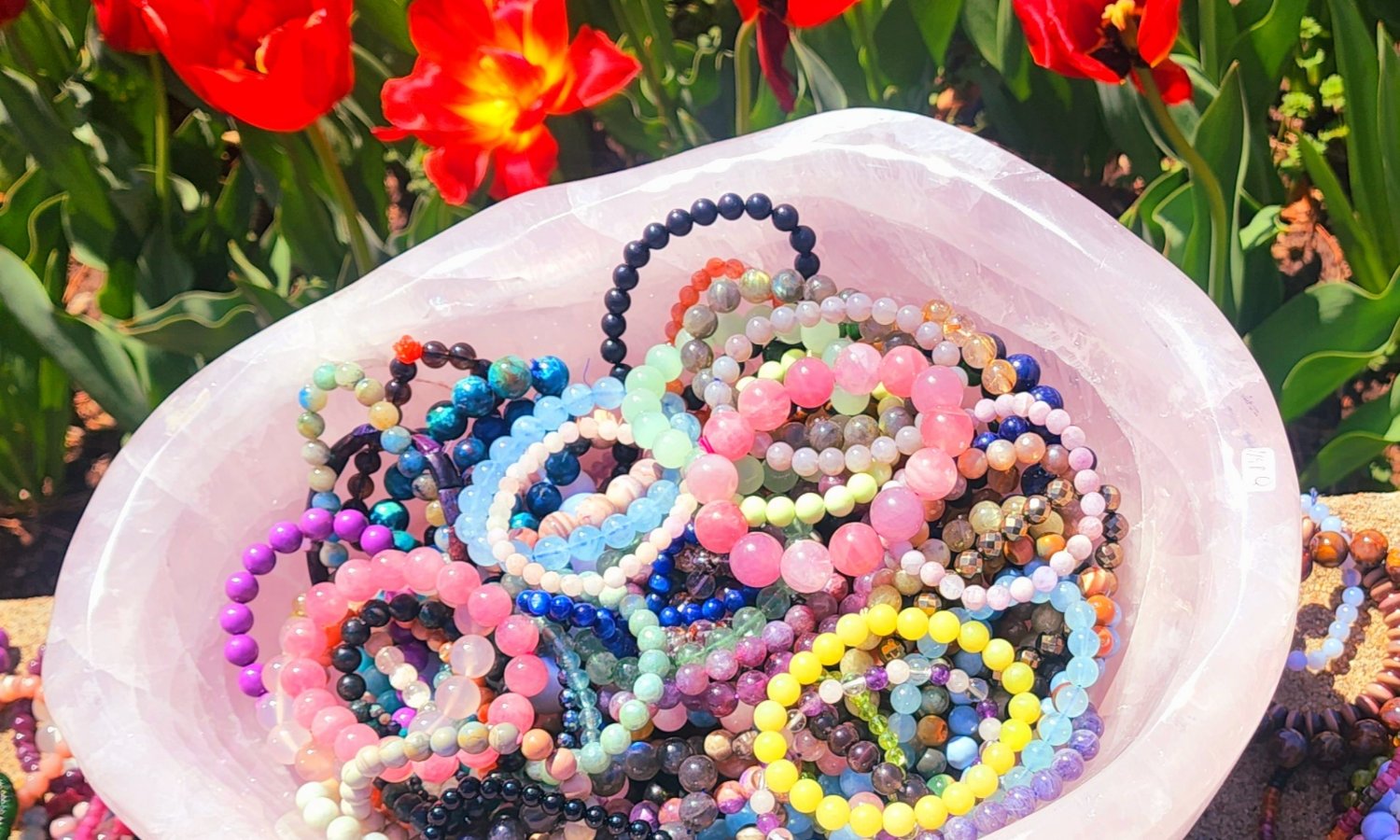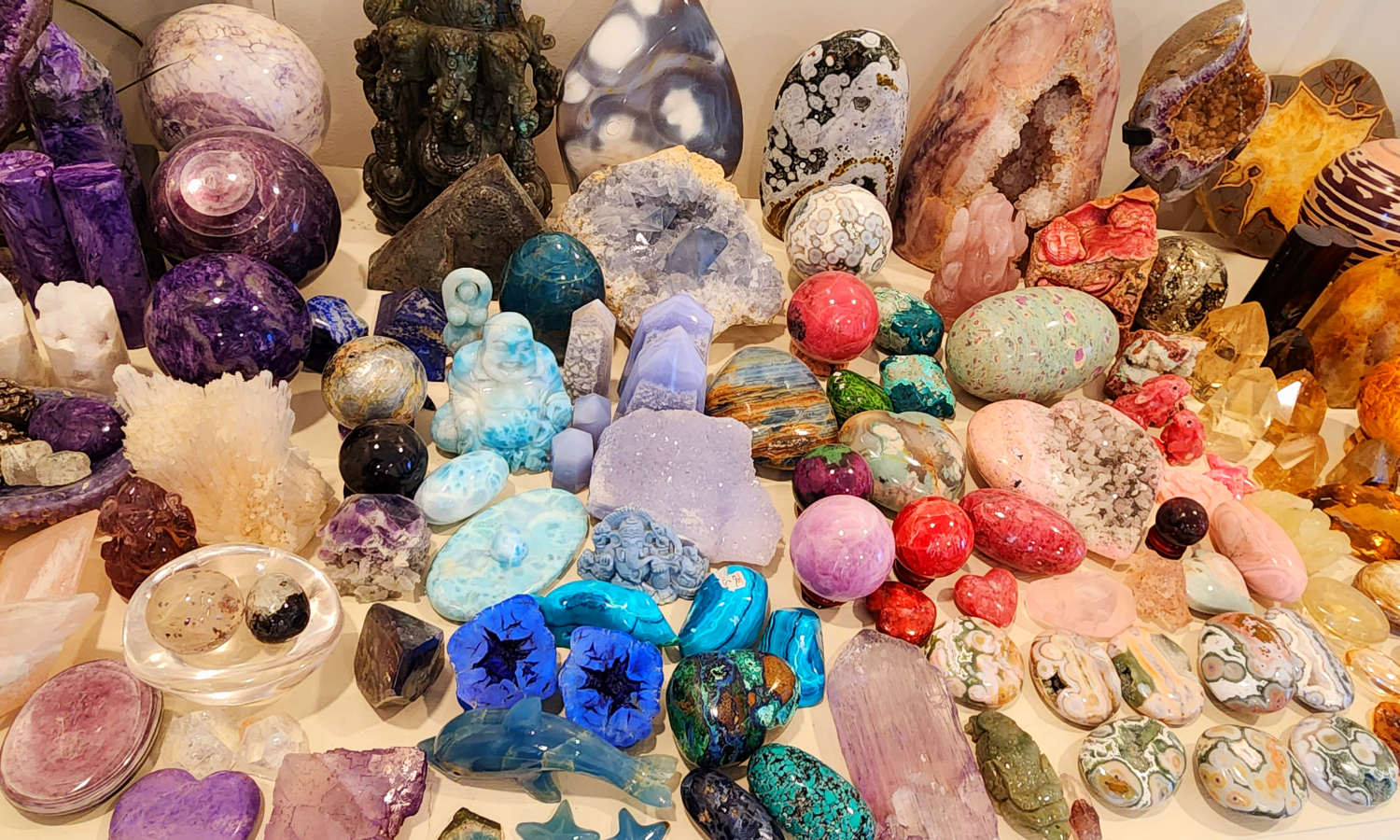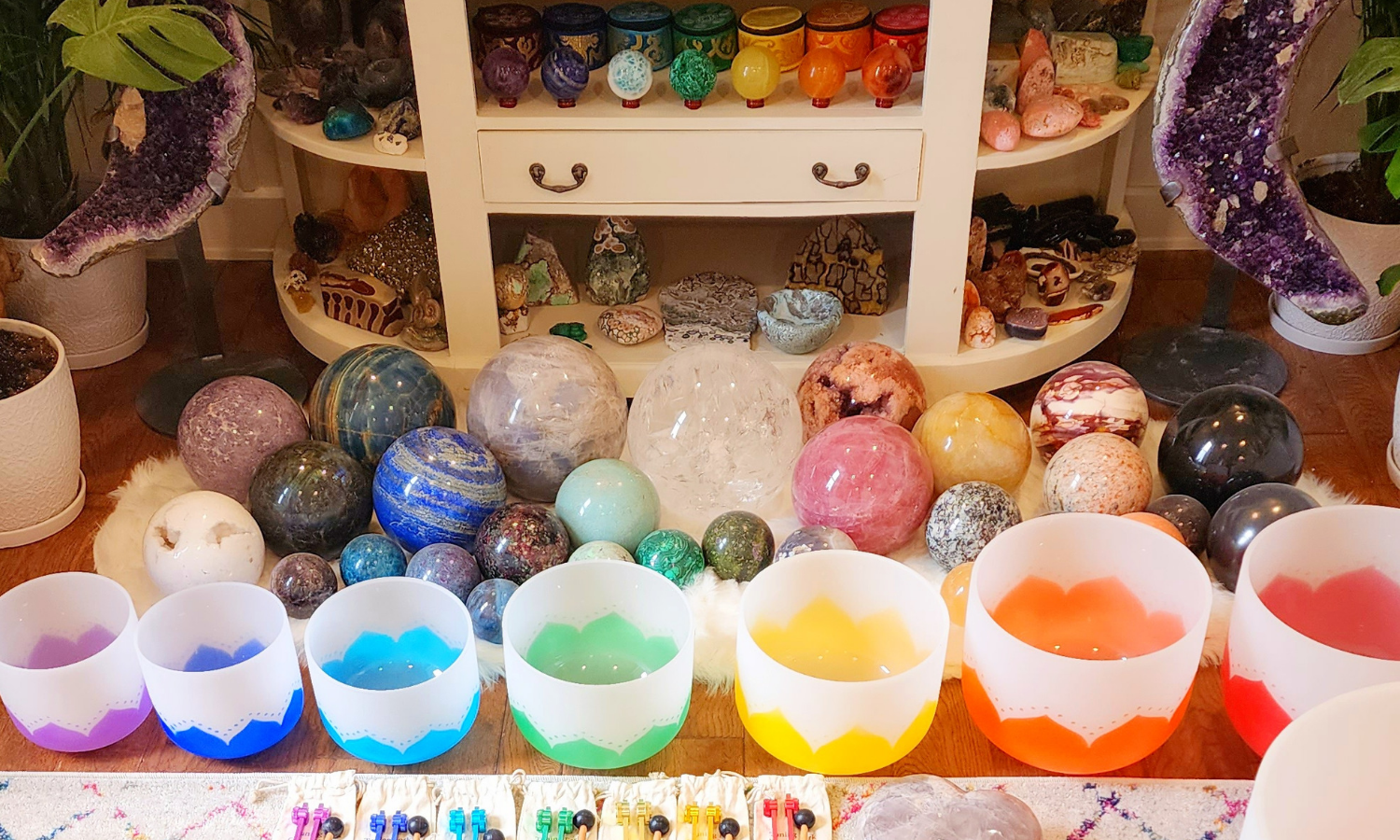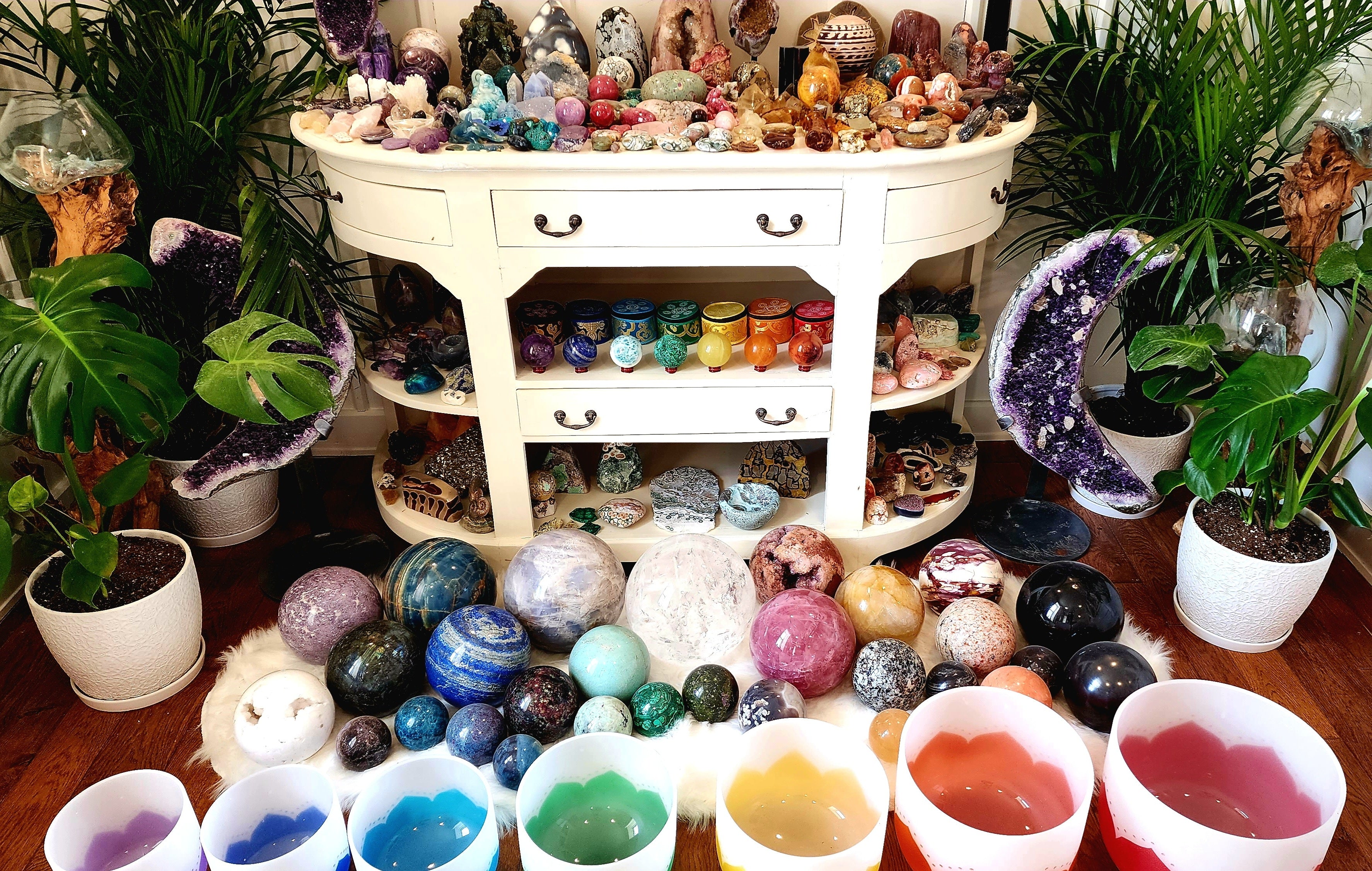Gemstone jewelry is a great way to infuse your energy field with the healing energy of crystals and inspire you to create magic in your life!
Gems have been used in jewelry prior to recorded history. The first recorded finding of jewelry was simple necklace made of fish bones that was discovered in a cave in Monaco from over 25,000 years ago. Archeological evidence shows around 4000 BC, ancient Egyptians were making gemstone jewelry with Lapis Lazuli and Amethyst.
Prior to modern gemology, gems were classified only by color! Today we understand there are huge differences even between gems of the same color. Emeralds are significantly more valuable than other green stones like Malachite. However, color is the most important factor in colored stones beauty (stones other than diamonds).
Gems can be organic (once living or produced by a living organism) or inorganic (composed of non-living matter). Most gems are minerals which are defined as inorganic, naturally occurring substances that have orderly crystalline structures and a definite chemical composition (allowing for slight variation).
For a stone to be considered a gem it must have three traits: beauty, rarity and durability. A gem's value is also effected by its color, clarity, cut and carat weight. These are important factors to keep in mind when shopping for jewelry as you may be comparing prices. Colored stones contain many kinds of inclusions and blemishes which effect their appearance, durability and value. Very few colored stones are completely free of inclusions because of the way crystals form. It is possible for these inclusions to only be visible with magnification. Natural, untreated gems are significantly more rare and expensive.
Most gemstones undergo various treatments to improve their appearance, durability or value. Because of how common this is, you should safely assume the jewelry you own contains treated gems, even if this was not disclosed to you at the time of purchase (although this is required by the FTC, many jewelry sellers fail to properly disclose this information, whether its intentional or due to lack of education). If you do not have a certification from a gemologist stating that it completely natural, it is wise to assume it has been treated. We will cover what gems are commonly treated in this guide and how to care for your gemstone jewelry so it may become an heirloom to pass on for generations.

common treatments
The majority of treatments make gems more beautiful, durable and affordable. It is always safe to assume gems have been treated unless proven otherwise. In my personal opinion, treatments do not effect a stone's healing energy.
Common gemstone treatments:
- Bleaching
- Cavity filling
- Colorless impregnation
- Dyeing
- Fracture filling
- Heating (one of the oldest and most common treatments dating back to Ancient Egypt)
- Irradiation
- Lattice diffusion
- Sugar and smoke treatments
- Surface modification
These incredible Pink Topaz Heart Rings, began as natural Topaz crystals that were heated to enhanced their color. This is a permanent treatment under normal wear.
Commonly treated stones include: Amethyst, Aquamarine, Chalcedony, Citrine, Emerald, Jade, Lapis Lazuli, Opal, Pearl, Ruby, Sapphire, Tanzanite, Tiger Eye, Topaz, Turquoise, and Zircon.
Spinel, Garnet and Tourmaline are examples of gems that are not commonly treated.
shopping for gemstone jewelry
Shopping for gemstone jewelry can be very intimidating with the vast amount stores and online shops. When shopping for gemstone jewelry, you will want to look for a trusted and reputable source that is educated on gems and jewelry. A reputable seller will be happy to answer your questions.
When shopping for jewelry you will want to consider the price, stone, setting and intention for the piece. Fancier stones should be set in sterling silver, gold or platinum. It would not make sense to set a geniune Emerald in stainless steel nor would it make sense to set imitation Ruby in solid gold. Price can be an indicator of value, like the saying goes, if it's too good to be true, it probably is! Alternatively, a high price alone does not guarantee you are getting a natural or high quality stone.
Here at Enchanting Earth, we are dedicated to creating enchanting gemstone jewelry for healing, empowerment and beauty to last lifetimes!


gemstone Jewelry Care
Properly caring for your jewelry will ensure its beauty and value. Gemstone jewelry can last lifetimes and become heirlooms. Gems can be scratched, chipped or dulled if not handled correctly. If you do not have a document showing your particular stones treatments, you will want to play it safe when it comes to caring for your jewelry.
- To clean your jewelry, use lukewarm water in a bowl, a soft makeup brush or cloth, and mild soap. Be gentle when cleaning and pat dry. You will not want to use a toothbrush on pearls or softer gems as they can scratch easy. Lay on a towel to dry.
- Gold and silver jewelry will tarnish over time, depending on how well you store and take care of them. Silver jewelry can be cleaned with a silver polishing cloth or magic eraser.
- We do not recommend using ultrasonic cleaners at home, please leave this up to a professional who can determine if your stone has any treatments. Certain treatments may cause the stone to break if placed in an ultrasonic cleaner.
- Many jewelry cleaning solutions contain ammonia and are only safe on Diamonds and durable colored stones like Sapphires (although certain treatments like fracture-filling of more durable stones will cause problems). For this reason, we do not recommend using jewelry cleaning solutions.
- Remove your jewelry before household cleaning, swimming in chlorinated water, cooking certain foods (even the acid in lemons or chemicals in cleaning products can cause problems for certain treatments or damage your stone), putting on lotions or perfume, physical activities, weight-lifting, sports and showering. This will also reduce tarnishing on your jewelry.
- Jewelry with doublets or triplets, should never be soaked in water. This can cause the glue to dissolve.
gemstone Jewelry Storage
Storing your jewelry properly will ensure its beauty lasts for lifetimes.
- It's never a good idea to keep your stones in direct sunlight, as many popular gems like Amethyst and Kunzite will fade if exposed to light for extended periods of time.
- Gemstone jewelry pieces are best stored in a fabric-lined box with compartments or dividers.
- Store your gold jewelry separately from silver jewelry. You can store them in soft cloth bags or divided jewelry organizers.
- Store your silver in a jewelry box lined with cotton or felt.
- Separate softer stones from hard stones to prevent them from scratching.
- Most jewelry should be stored in a cool, dry place away from direct sunlight and halogen lights. If you live in a humid climate, adding silica packs in your jewelry box will help absorb extra moisture.
- Pearls and Opals need moisture and draw moisture from the air. Keeping these in an air-tight container like a jewelry box or safe deposit box can be damaging to them. Pearls will also dry out, crack or discolor from excess heat. Pearls should also be cleaned before storage because they vulnerable to acids (think perspiration) and scratching.
- Store Opal safely for extended periods by wrapping it in cotton wool with a few drops of water, then put it in a plastic bag.
- Store Pearl and Opal jewelry separately from other pieces to minimize accidental contact or scratches.
You can find my favorite jewelry storage products here (Amazon affiliate link, I will earn a small commission if you make a purchase from my Amazon Storefront).












Leave a comment